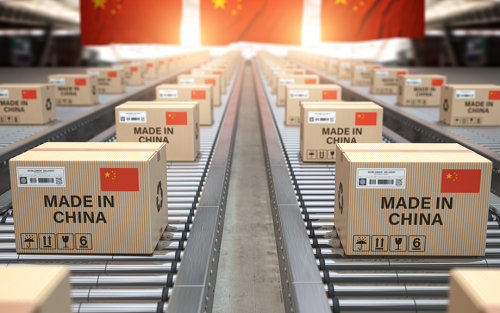Endogenous Supply Chains, Productivity, and COVID‑19

During the COVID-19 pandemic, many industries adapted to new social distancing guidelines by adopting new technologies, providing protective equipment for their employees, and digitizing their methods of production. These changes in industries’ supply chains, together with monetary and fiscal stimulus, contributed to dampening the economic impact of COVID-19 over time. In this post, I discuss a new framework that analyzes how changes in supply chains can drive economic growth in the long run and mitigate recessions in the short run.
How Did China’s COVID‑19 Shutdown Affect U.S. Supply Chains?

The COVID-19 pandemic has had a significant impact on trade between the United States and China so far. As workers became sick or were quarantined, factories temporarily closed, disrupting international supply chains. At the same time, the trade relationship between the United States and China has been characterized by rising protectionism and heightened trade policy uncertainty over the last few years. Against this background, this post examines how the recent period of economic disruptions in China has affected U.S. imports and discusses how this episode might impact firms’ supply chains going forward.
Trade Policy Uncertainty May Affect the Organization of Firms’ Supply Chains

Global trade policy uncertainty has increased significantly, largely because of a changing tariff regime between the United States and China. In this blog post, we argue that trade policy can have a significant effect on firms’ organization of supply chains. When the probability of a trade war rises, firms become less likely to form long-term, just-in-time relationships with foreign suppliers, which may lead to higher costs and welfare losses for consumers. Our research shows that even in the absence of actual tariff changes, an increased likelihood of a trade war can significantly distort U.S. imports.
Why Renegotiating NAFTA Could Disrupt Supply Chains

Supply chains, where production of a final good incorporates specialized parts produced abroad, have become increasingly interlinked across the U.S.-Mexico border. The North American Free Trade Agreement (NAFTA) allows tariff-free commerce between the United States, Canada, and Mexico, has facilitated this integration. Some critics of NAFTA are concerned about the bilateral trade deficit and have proposed stricter rules of origin (ROO), which would make it more cumbersome for firms to access the zero tariff rates they are entitled to with NAFTA. We argue that measures that make it costlier for U.S. firms to import will also hurt exports because much of U.S.-Mexican trade is part of global supply chains.
Counterparty Risk in Material Supply Contracts
Forming long-term partnerships with customers and suppliers often creates a competitive advantage for firms because it permits resource sharing, eases financial constraints, and encourages investment in relationship-specific capital.










 RSS Feed
RSS Feed Follow Liberty Street Economics
Follow Liberty Street Economics